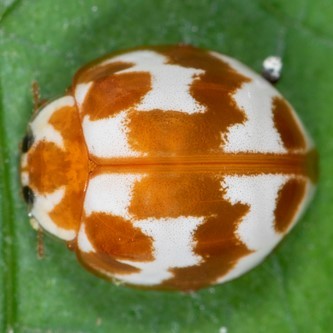Your gateway to endless inspiration
Insect - Blog Posts
Moth Of The Day #115
Magpie Moth
Nyctmera annulata
From the erebidae family. They have a wingspan of 35-50 mm. They tend to inhabit northern heather moorland but also fairly frequent in garden, allotments, hedgerows and woodland. They can be found mainly in New Zealand.


Moth Of The Day #123
Blair's Mocha
Cyclophora puppillaria
From the geomtridae family. They have a wingspan of 28-36 mm. They tend to inhabit open and coastal habitats, but are also occasionally seen in woodland. They can be found in Europe and North Africa to the Caucasus area.


If you haven't already, mayhaps you could do an excerpt on the Bogong Moth.
Moth Of The Day #135
Bogong Moth
Agrotis infusa
From the noctuidae family. They have a wingspan of 25-35 mm. They tend to inhabit urban areas, forests and woodlands. They can be found throughout Australia, New Zealand and Tasmania. The name derives from the Dhudhuroa (an Aboriginal Australian language) word bugung, which describes the brown coloration of the moth.


Image IDs: all of the images are photographs of the same subject matter, which is a close-up of a very small saptha beryllitis moth on even smaller bright pink and white flowers. The moth is cone-shaped, with its head being the point. It has two long, thin antennae that are all black except for one white stripe near the top of each. Its eyes are comically large compared to the rest of its head. Only 4 of its legs are visible, which are black with 3 white stripes on their lower sections. Its wings are iridescent green/teal on top, followed by an iridescent black/gold stripe, a stripe of teal, then two thin pink stripes, then the bottom half is all iridescent black/gold. It’s so tiny you can see all the little scales that make up its wings. The background is mostly just green, likely the out-of-focus leaves of the plant.
ID1: the moth balancing poorly on one of the flowers, it’s thin, barely visible pink proboscis curving into the flower. One of its legs is blurred in movement. It’s photographed from the top.
ID2: the moth balancing much better on one of the flowers. This one is also photographed from the top.
ID3: a photo of the moth from the side and further back than the others. To the right of it there is some sort of bee or wasp also feeding on the same plant. It is mostly dull yellow and black, with alternating neon green and black stripes on its abdomen.
ID4: a photo of the moth from the side, also balancing on a flower but with its antennae touching the flower.
ID5: a photo of the moth from the front. It’s sitting on some flower buds while feeding from an open flower. Its antennae are slightly out of focus and blurred with movement.
/End IDs






























